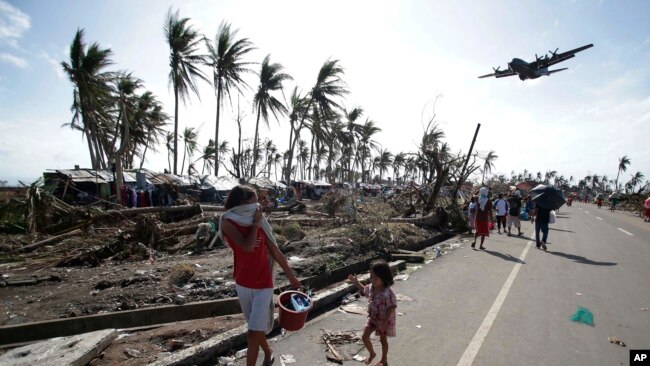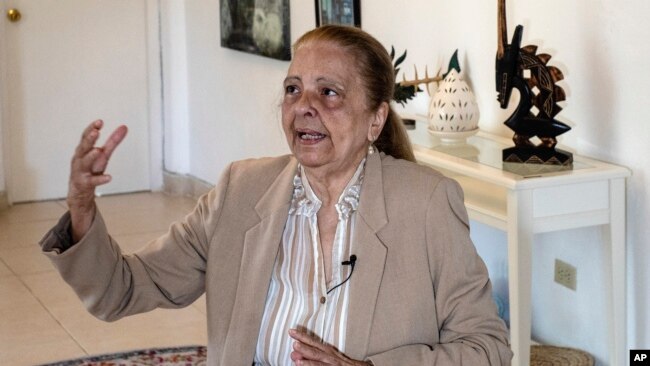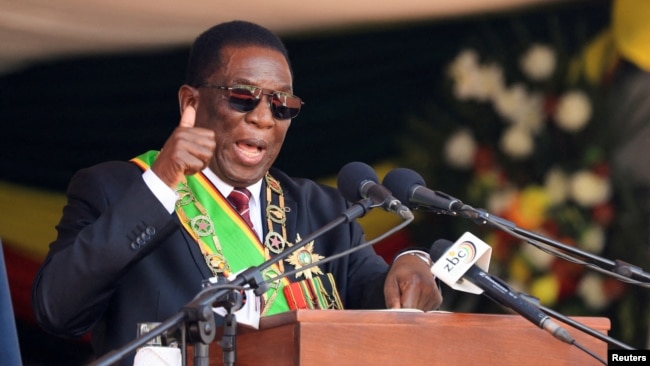온난화가 폭풍을 일으키면서, 어떤 사람들은 더 큰 허리케인 규모를 원합니다: 카테고리 6?
As Warming Stokes Storms, Some Want Bigger Hurricane Scale: Category 6?
페이지 정보
작성자 By Associated Press 작성일 24-02-05 20:28 댓글 0본문

파일- 2013년 11월 11일, 파일 사진에서 생존자들이 군용 C-130 비행기가 태풍으로 파괴된 필리핀 중부 레이테 지방의 타클로반 도시에 도착했을 때 모습.
FILE- In this Nov. 11, 2013, file photo, survivors look as a military C-130 plane arrives at typhoon-ravaged Tacloban city, Leyte province central Philippines.
지난 10년 동안 몇 안 되는 강력한 열대성 폭풍과 앞으로 더 많이 발생할 것이라는 전망에 전문가 몇 명이 새로운 범주의 와퍼 허리케인을 제안했습니다. 범주 6입니다.
A handful of super powerful tropical storms in the last decade and the prospect of more to come has a couple of experts proposing a new category of whopper hurricanes: Category 6.
여러 연구결과에 따르면, 가장 강력한 열대폭풍은 기후변화 때문에 더욱 강도가 세지고 있는 것으로 나타났습니다. 그래서 50여 년 전에 개발된 전통적인 5개 등급의 사피어-심슨 등급 척도는 가장 근육이 발달한 폭풍의 진정한 위력을 보여주지 못할 수도 있다고 두 기후학자가 월요일 (미국 국립과학원회보)에 실린 한 연구결과에서 제시했습니다.
Studies have shown that the strongest tropical storms are getting more intense because of climate change. So the traditional five-category Saffir-Simpson scale, developed more than 50 years ago, may not show the true power of the most muscular storms, two climate scientists suggest Monday in a study in the Proceedings of the National Academy of Sciences.
그들은 바람이 309kpm(192mph)을 초과하는 폭풍에 대한 여섯 번째 범주를 제안합니다.
They propose a sixth category for storms with winds that exceed 309 kpm (192 mph).
현재 시속 252 킬로미터(157마일) 이상의 바람을 동반하는 폭풍은 카테고리 5입니다. 이 연구의 저자들은 개방형 그룹화는 322 킬로미터(200마일) 이상의 바람을 부는 괴물 같은 폭풍으로부터 더 높은 위험에 대해 사람들에게 충분히 경고하지 않는다고 말했습니다.
Currently, storms with winds of 252 kph (157 mph) or higher are Category 5. The study's authors said that open-ended grouping doesn't warn people enough about the higher dangers from monstrous storms that flirt with 322 kph (200 mph) or higher.
몇몇 전문가들은 AP 통신에 그들은 다른 범주가 필요하다고 생각하지 않는다고 말했습니다. 그들은 허리케인에서 물이 단연코 가장 치명적인 살인자인 반면, 풍속을 기반으로 하기 때문에 대중에게 잘못된 신호를 줄 수도 있다고 말했습니다.
Several experts told The Associated Press they don't think another category is necessary. They said it could even give the wrong signal to the public because it's based on wind speed, while water is by far the deadliest killer in hurricanes.
2013년 이래로, 모두 태평양에 있는 5개의 폭풍은 시속 192마일 이상의 바람을 가졌고, 2개의 폭풍이 필리핀을 강타했습니다.
Since 2013, five storms — all in the Pacific — had winds of 192 mph or higher that would have put them in the new category, with two hitting the Philippines.
세계가 따뜻해지면서, 미국을 강타한 많은 폭풍들이 더 강해지는 멕시코만을 포함하여, 그러한 와퍼 폭풍에 대한 조건들이 점점 더 무르익고 있다고 연구 저자들은 말했습니다.
As the world warms, conditions grow riper for such whopper storms, including in the Gulf of Mexico, where many storms that hit the United States get stronger, the study authors said.
"기후 변화는 최악의 폭풍을 더 나쁘게 만들고 있습니다," 라고 로렌스 버클리 국립 연구소의 기후 과학자인 수석 연구원 마이클 웨너가 말했습니다.
“Climate change is making the worst storms worse," said study lead author Michael Wehner, a climate scientist at the Lawrence Berkley National Lab.
기후 변화 때문에 폭풍이 더 많은 것은 아닙니다. 하지만 가장 강한 것은 더 강렬합니다. 모든 폭풍 중에서 주요 허리케인의 비율이 증가하고 있고 그것은 더 따뜻한 바다 때문이라고 연구에 참여하지 않은 마이애미 대학의 허리케인 연구원 브라이언 맥놀디는 말했습니다.
It's not that there are more storms because of climate change. But the strongest are more intense. The proportion of major hurricanes among all storms is increasing and it's because of warmer oceans, said University of Miami hurricane researcher Brian McNoldy, who wasn't part of the research.
특히 태풍 하이옌이 공해상에서 시속 315km(195mph)의 풍속에 도달한 이후 전문가들은 때때로 카테고리 6을 제안했습니다. 그러나 연구에 따르면 하이옌은 "단독된 사례는 아닌 것 같다"고 합니다.
From time to time, experts have proposed a Category 6, especially since Typhoon Haiyan reached 315 kph (195 mph) wind speeds over the open Pacific. But Haiyan "does not appear to be an isolated case,” the study said.
충분한 풍속의 폭풍이 국제 날짜선의 동쪽에서 형성되면 허리케인, 서쪽에서 형성되면 태풍이라고 합니다. 인도양과 호주에서는 사이클론이라고 알려져 있습니다.
Storms of sufficient wind speed are called hurricanes if they form east of the international dateline, and typhoons if they form to the west of the line. They're known as cyclones in the Indian Ocean and Australia.
309kpm(192mph) 이상의 바람을 동반한 5가지 폭풍은 다음과 같습니다:
The five storms that hit 309 kpm (192 mph) winds or more are:
2013년 필리핀서 6천300여명 사망 하이옌.
2015년 허리케인 패트리샤는 시속 346km(215mph)를 기록한 뒤 약해져 멕시코 할리스코를 강타했습니다.
필리핀과 대만을 피해 중국에 상륙하기 전까지 시속 315km(시속 195마일)에 달했던 2016년 태풍 메란티.
2020년 태풍 '고니' 필리핀서 사망자 수 십 명 발생 전 약한 태풍 '고니'
2021년 태풍 수리개, 역시 시속 315km에 달했다가 약화돼 아시아와 러시아 일부 지역을 뒤덮었습니다.
현재 퍼스트 스트리트 재단의 전 NOAA 기후 및 허리케인 연구원인 짐 코신 연구 공동 저자는 세계가 "이러한 폭풍이 점점 더 강해지면서" 5개의 폭풍 범주를 고수한다면 잠재적 위험을 점점 더 과소평가할 것이라고 말했습니다.
If the world sticks with just five storm categories “as these storms get stronger and stronger it will more and more underestimate the potential risk,” said study co-author Jim Kossin, a former NOAA climate and hurricane researcher now with First Street Foundation.
태평양 폭풍은 멕시코만이나 카리브해와 달리 그들을 약화시킬 땅이 적고 폭풍이 더 거세질 여지가 더 크기 때문에 더 강하다고 코신은 말했습니다.
Pacific storms are stronger because there's less land to weaken them and more room for storms to grow more intense, unlike the Gulf of Mexico and Caribbean, Kossin said.
출처 : VOANews
댓글목록 0
등록된 댓글이 없습니다.

















